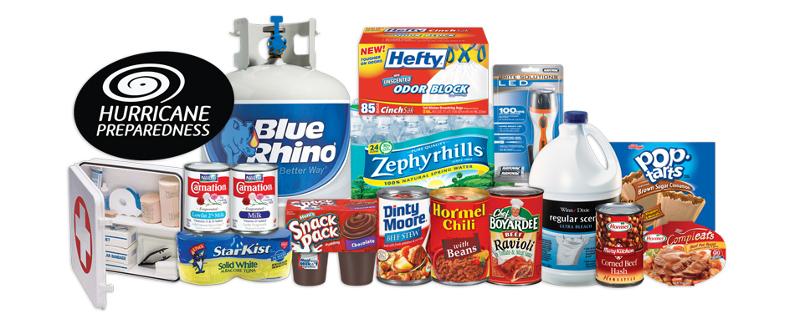National Preparedness Month September
Posted by Michelle Sparks on Nov 9th 2017
National Preparedness Month September
September is National Preparedness Month and the theme is “Disasters Don’t Plan Ahead. You Can” is the key takeaway from this blog we have prepared for you. Everyone can make a plan on how to respond during an emergency. Emergencies can occur anywhere and everywhere such as at work, business, home, school, places of worship and places that we shop at on a regular basis. If we all studied basic emergency procedures the amount of people who could assist in case of an emergency would increase greatly.
MAKE A PLAN
Make a plan today. Your work group or family may not be together if a disaster strikes, so it is important to know the different types of emergencies that could happen in your area or the area that you may be traveling in. Establish a work group or family meeting spot that is easy to find and also know how to contact each other and reconnect if you happen to become separated.
1. How will I receive emergency alerts and warnings?
2. What is my evacuation route?
3. What is my shelter plan?
4. What is my work group/ family/ household communication plan?
When creating these plans take into consideration the needs of the different members of your workgroup /family. Begin to network within your workgroup or family to come up with a plan to meet the needs of those who may need extra assistance with mobility or communication factors. Here is a list of some factors to consider.
- 1.Medial needs (special equipment or prescriptions)
- 2.Different ages within a family group
- 3.Dietary needs of individuals
- 4.Disabilities or accessibility needs including assistive devices and equipment
- 5.Language barrier
- 6.Cultural or religious considerations
- 7.Pets and or service animals
PRACTICE
Put these steps into practice so that you will be prepared in case an emergency happens. By practicing these skills you will feel much more calm and in control during a real emergency situation.
Disaster Supply Kit
Here are some needed items that you will need for your disaster kit. The kit size will vary based on the number of people that each kit will be taking care of. If you have a large workforce or large family, you may want to consider creating or purchasing more kits.

A basic emergency supply kit should include:
- Water- one gallon of water per person per day for at least 4 days’ time, for drinking and for sanitation. Store water in a cool dark place. Bottled water typically is good for 6 months, so check your emergency supply twice a year and replace as needed.
- Food- plan to have at least 3 days of non-perishable food per person
- Manual can opener to open cans of food
- First Aid Kit- filled with necessary first aid supplies such as bandages, triple antibiotic ointment, alcohol wipes, antiseptic wipes, CPR Shield, tweezers, first aid scissors, gauze, first aid tape,
- Battery operated or hand crank operated radio with spare batteries
- Flashlight With spare batteries
- Dust Mask to filter out contaminated air
- Trash bags to discard trash
- Wrench or other tools to turn off utilities
- Cell phone with chargers and back up batteries
Other Emergency Supplies to Consider:
- Prescription medications
- Nonprescription medications such as pain relievers, anti-diarrhea medications
- Glasses/ Contacts and contact solution
- For babies: infant formula, bottles, diapers, wipes
- For Pets: pet food and extra water for each animal you will be preparing for
- Feminine supplies and other hygiene items
- Fire Extinguisher
- Sleeping bags and or a warm blanket for each person you are preparing for
- Cash (remember that ATM’s may not function if power is lost)
- Important documents (insurance policy, bank account records) in a water proof pouch. Better yet, save these documents electronically.
- Change of clothes for each person with closed toe shoes
- Books and games to keep children occupied
Where to store your emergency kits:
Work: Prepare to shelter at work for at least 24 hours or longer. Your work emergency kit should contain food, water and medicine. We offer The Everything Kit which is perfect for offices. Also consider walking shoes available to grab and go (heels and escaping don’t go well together).
Vehicle: Keep an emergency survival kit such as our Urban Road Warrior Kit and first aid kit in your car in case you become stranded.
Home: Keep your emergency kit in a designated place and have it ready and available in case you have to leave your home quickly. Make sure that all family members know the location of the kit.
